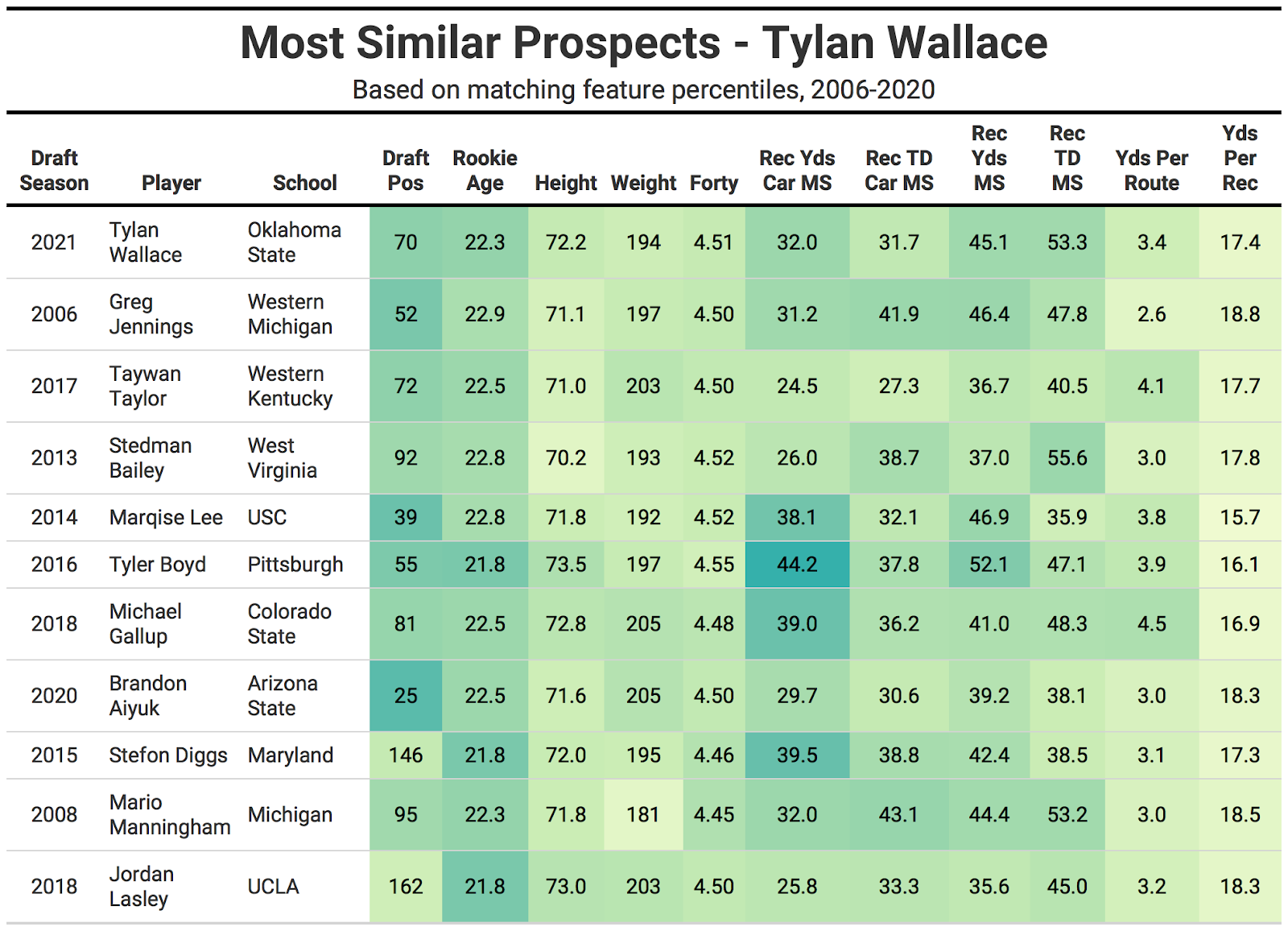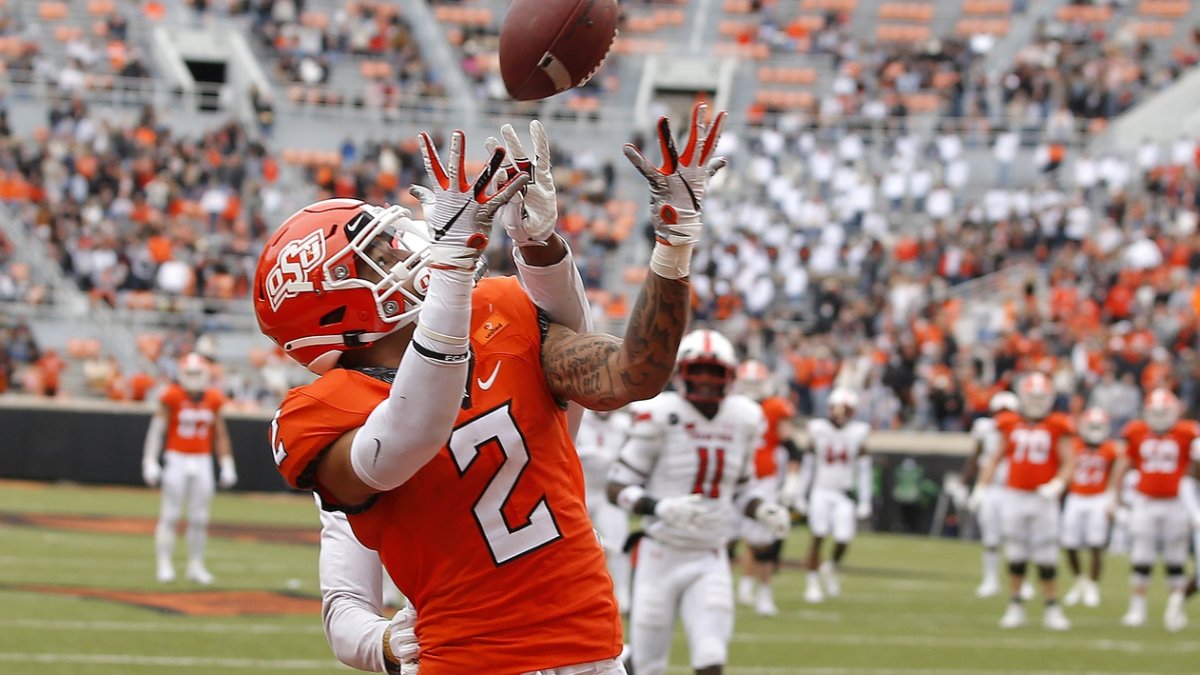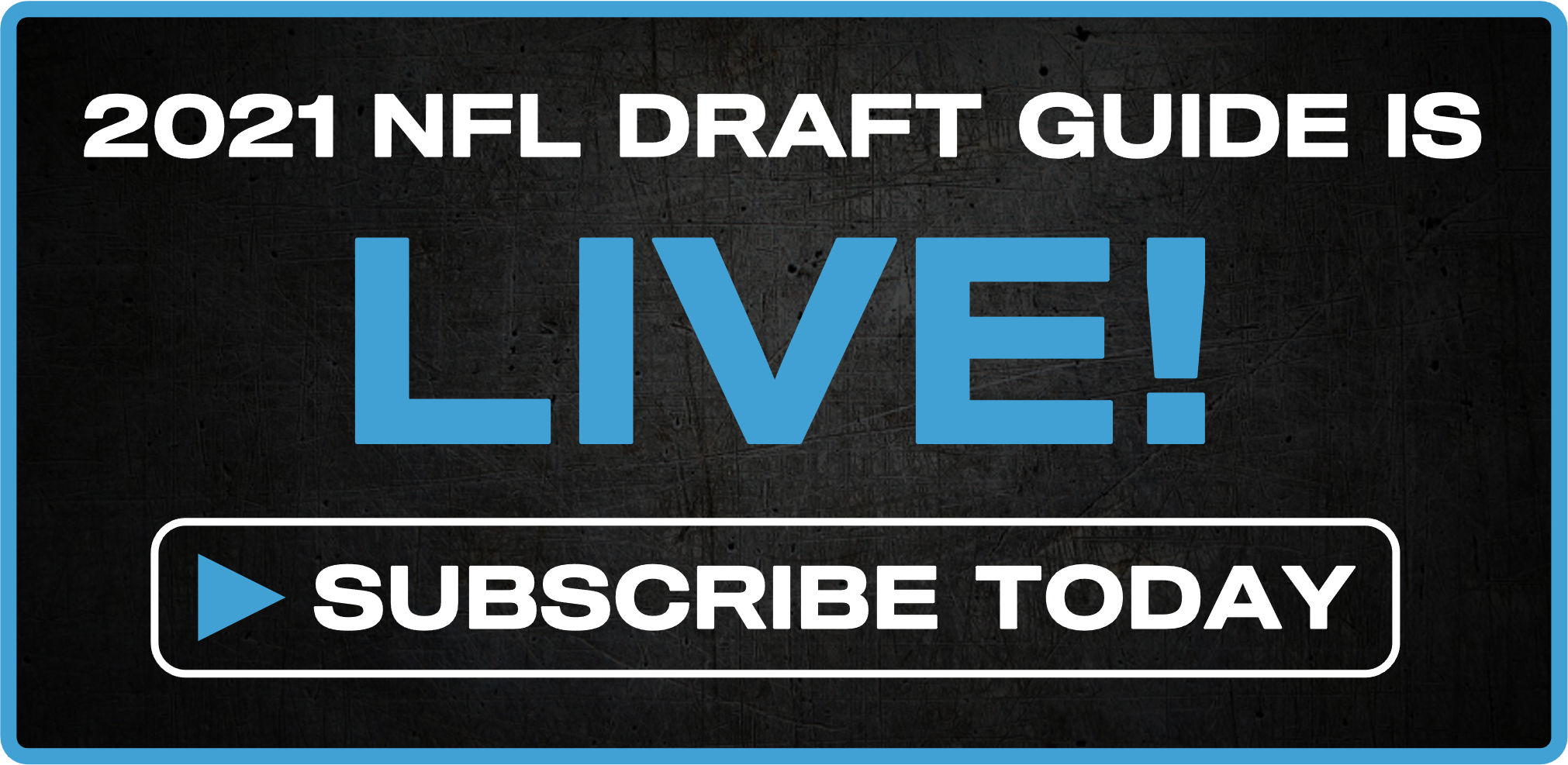Comparing current NFL draft prospects to those of years past is standard procedure in draft evaluation, though most comparisons are built on the memory recall and subjective opinion of the particular evaluator.
This will be the first in a series of articles comparing the 2021 draft prospects to prior years and picking out the most similar comps with a clearly delineated and quantifiable method.
PFF data scientist Eric Eager has done tremendous work building college-to-pro projections, which are built off the robust college data we’ve collected since 2014 and have been applied to exercises like building an “Analytics” Mock. In this analysis, I will use some of our advanced stats for comparison but primarily rely on traditional stats to go back further to compare the 2021 prospects to draft classes going back to 2006.
Without the NFL Scouting Combine this season, the important measurables like weight and 40-yard dash will be reported through the various pro days.
View PFF's 2021 NFL Draft position rankings:
QB | RB | WR | TE | T | iOL | DI | EDGE | LB | CB | S
METHODOLOGY
The comps below were derived from a two-step process. First, I converted all the most statistically relevant stats and measurables to percentiles based on the thousands of prospects who have entered the NFL since 2006 at each position. Then, I filtered the total universe of past prospects by those who had draft positions, weight and 40 times within a 10th percentile in either direction of Oklahoma State WR Tylan Wallace. For undrafted players, I assigned a numerical draft position of 300.
The rest of the matching features were transformed by principal component analysis (PCA). I found the closest statistically comparable players by the euclidean distance between the players' principle components, listed in the top 10 below.
The metrics for PCA are career market shares for receiving yards and receiving touchdowns, best-season market shares for receiving yards and touchdowns, yards per route run, and yards per reception.
For Wallace's draft position, I’m using an estimate based on the mock data collected at GrindingTheMocks.com. For the weight and 40 time, I’m using the numbers from his pro day, with a 0.03-second penalty added to the 40 time to reflect the uncertainty of pro-day timed measurements.
Most comparable players
Wallace’s comps are somewhat boosted by the decision to use the player’s best season for many of the metrics. In Wallace's case, that was his junior year when he played eight games before suffering an ACL tear.
His numbers took a slight dip in 2020, and there could have been lingering effects of this injury on his 4.48-second 40-yard dash time (55th percentile) at the Oklahoma State pro day that was less explosive than some would have liked to see. More concerning was his 33-inch vertical (19th) and 9-foot-4 broad jump (4th).
It’s possible that the Oklahoma State receiver is still recovering and will round into top form by the time the NFL season starts in September, but there are substantial risks of diminished athleticism and re-injury in his future.
Give me Tylan Wallace in the late 2nd, early 3rd round all day. pic.twitter.com/FextXu6hfp
— Brenden Deeg (@BrendenDeeg_) April 13, 2021

Wallace's comps are really strong, with mostly second-round picks who also showed strong collegiate production. Greg Jennings, Tyler Boyd and Michael Gallup were great picks in the second and third rounds, and Stefon Diggs was a steal in the fifth round. Brandon Aiyuk has also shown early success. Diggs suffered injuries in multiple seasons that likely hurt his draft stock, which could also happen with Wallace.
Exclusive content for premium subscribers

WANT TO KEEP READING?
Dominate Fantasy Football & Betting with AI-Powered Data & Tools Trusted By All 32 Teams
Already have a subscription? Log in




 © 2025 PFF - all rights reserved.
© 2025 PFF - all rights reserved.